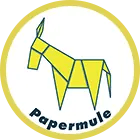
3 Top Tips For An Effective Digital Asset Management Strategy
We all receive, use and create digital content at a prolific rate and whilst digitisation promises a host of efficiencies the sheer volume and the associated management can present media companies some significant challenges.
Where is it stored? When was it created? Where did it originate? Who created it? What rights are associated with it? How will I find it again? Where’s it been used? How long should I keep it? Who can access it? Is it compliant with GDPR?
Without an effective digital asset management strategy data overflows the desktop, quickly outgrows the fileserver and becomes distributed across a sprawling enterprise in a typically semi-chaotic, insecure and inaccessible fashion.
Here are three top tips to help keep your digital assets safe, accessible and usable.
Set Clear Objectives and Requirements
Clearly define as much as possible about the needs of your business. This may seem ‘obvious’ but significant aspects are often ‘assumed’ and later discovered. Does the need span a team, division or global enterprise? Is external third-party access needed for customers or the supply chain? Do you just need a repository or are there workflow-related requirements like asset harvesting, media production, validation and approval?
Think about vocabulary and language needs! Make sure you have an enterprise-wide agreement around what you call things as solitary words, which often need additional context to make sense.
Define retention rules while considering legal requirements such as geolocation/data export, data-purging
Create use-cases about how people will need to find and interact with content which will tease out not only data requirements but also features. For example, Tom wants to be able to find pictures that ‘look like these ones’ – This instantly calls for some level of AI image recognition as ‘looks like’ is not the same as ‘shares similar meta-data tags as’!
Finally – google the ‘MoSCoW method’ and apply this sensibly to everything!
Storage and Accessibility
Adopting highly available and resilient storage has never been easier with cloud-based solutions offering Service Level Agreements detailing both accessibility and preservation levels that greatly exceed what you can provide with local drive and single offsite backup! Regardless of cloud or opting for ‘on prem’ ensure your requirements include both availability and recovery time targets so you know exactly where you stand. Be sure to consider the worst-case scenarios when setting these targets looking at the impact during peak points in the working day such as leading into production deadlines. Ensure your assets are ‘physically accessible’, preferably via a browser and from anywhere those needing them might be – that might include home or whilst mobile as well as the office! Consider performance, comms layers such as VPN and the impact on IT services to support them and maybe opt for cloud-provisioned services needing little more than a secure two factor authenticated login.
Metadata, Tagging & Searching
It's not worth storing digital assets if they remain inaccessible when you need them. Consistent metadata and tagging, therefore, is vital to be able to identify assets individually or in groups by their key attributes. A solid digital asset management strategy will incorporate the accumulation and maintenance of as much metadata as possible with each asset. Develop a standardised approach and vocabulary that can evolve with your needs to capture and store as much relevant information as possible. Wherever possible automate the collection of this information through data extraction, AI interrogation and harvesting soft tertiary data such as human interactions and usages.
Consider metadata that supports the following functions;
-
Descriptive Metadata – what, where, when who
-
Technical Metadata – format, specification
-
Administrative Metadata – rights, permissions, versions
-
Use Metadata – user access and action tracking
-
Preservation Metadata – checksums, time frames
Where possible, adopt metadata standards such as Exif, IPTC and XMP.
Papermule's digital asset management system provides an extensible database schema, allowing solutions to develop over time and store an ever broader set of metadata - everything is collected, tagged and fully searchable.
Find Out More
Effective digital asset management requires a comprehensive and effective strategy. To find out more about strategies, as well as Papermule's asset management system, contact us today for a free consultation.
Image Source: Unsplash



